
With the crispness of fall in the air, it’s the ideal time to engage in a mindful clean-up for the wildlife in our garden.
Even the smallest changes can make a world of difference for insects, birds, and the overall health of our garden’s soil.
And the good news is, these tiny changes translate into less work for you – all by loosening the reins and redefining the fall and winter garden.
Over the past few years, I’ve been implementing some of these changes in my garden, not only embracing the naturalist movement in how I design but also changing my attitude about tidying up the garden in the fall.
And, thanks to garden visionaries like Piet Oudolf, Tom Stuart-Smith, and Margie Ruddick (to name just a few), gardens are now appreciated in all seasons.
We celebrate the fading, muted colors of fall, the sound of rustling leaves, and the structural beauty of dried seed heads and bare branches.
In addition, the traditional fall chores have evolved, and rethinking fall clean-up has become a mainstream topic in media and routine practice at major public gardens.


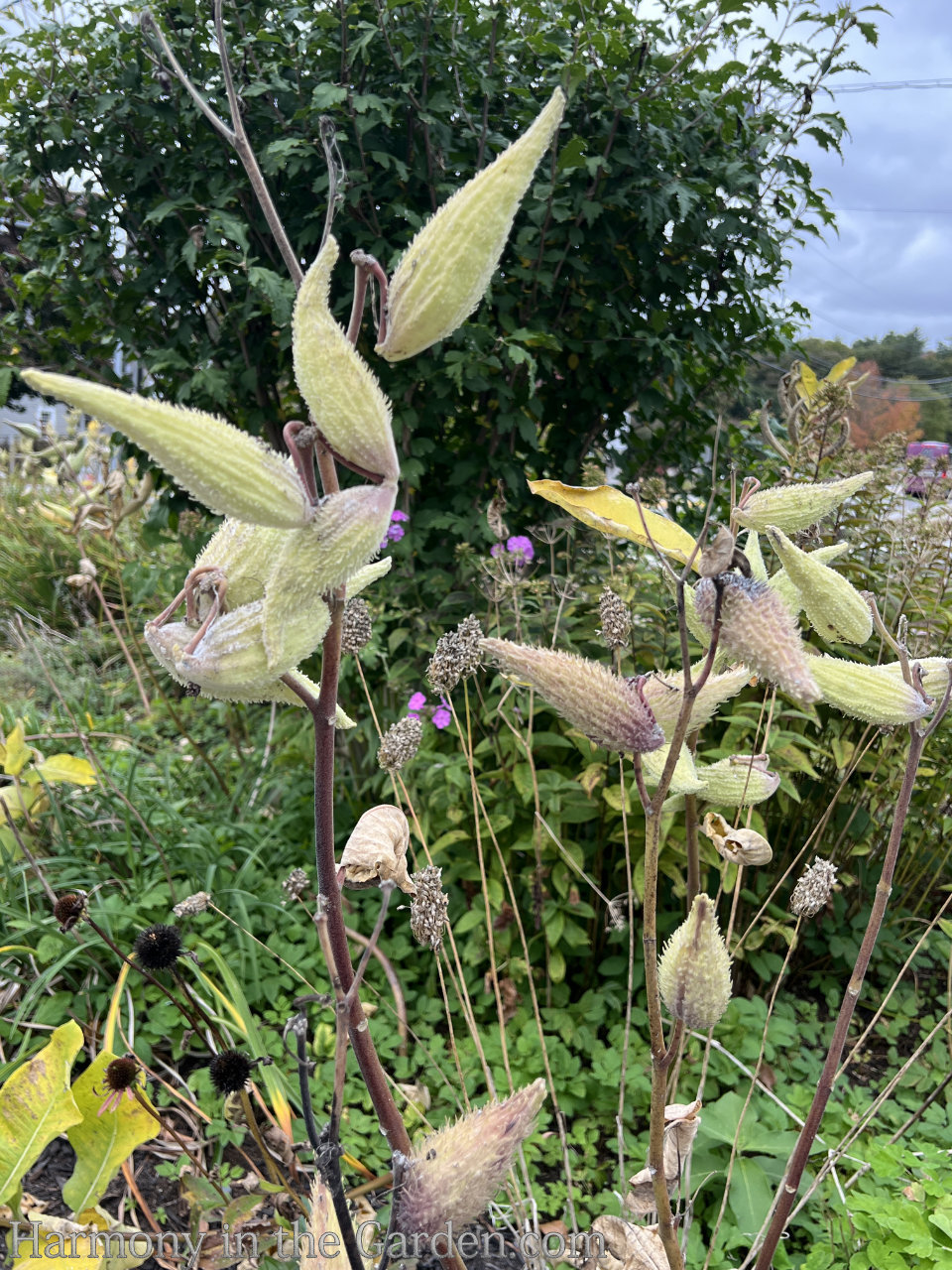
In fact, while recently visiting the Coastal Maine Botanical Gardens, I was so impressed with how they ‘practice what they preach’ and put nature first by loosening the reins on fall clean-up.
Throughout the garden, they’ve left seed heads in place for hungry birds, created insect environments to protect them through the winter, and let the fading season’s beauty be the star of the garden.
So, as we head into fall, please join me in making some (or all!) of the changes below and adopting a gentle touch when tidying up your fall garden.

1. Embrace the Beauty and Importance of Dried Seed Heads
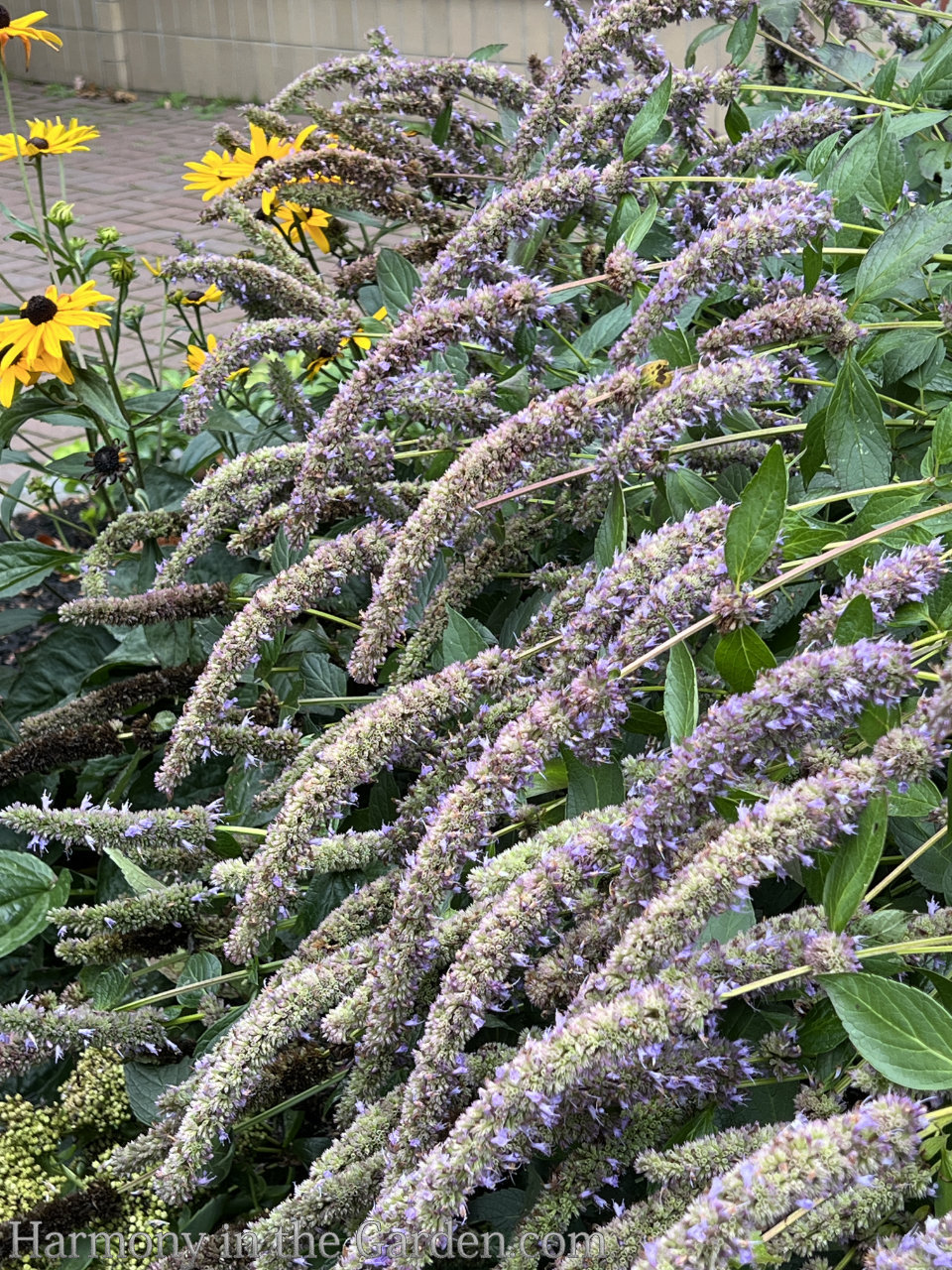
The warm, earthy tan hues of dried flowers and seed heads provide a comforting sight on cold winter days, bringing color and texture to a dormant landscape.
As Piet Oudolf famously said, ‘Brown is a color, too!’ But beyond their visual appeal, these plants play a vital role in supporting local wildlife during winter.
Dried seed heads are a valuable food source for birds, providing energy during the colder, leaner months when other resources are scarce.
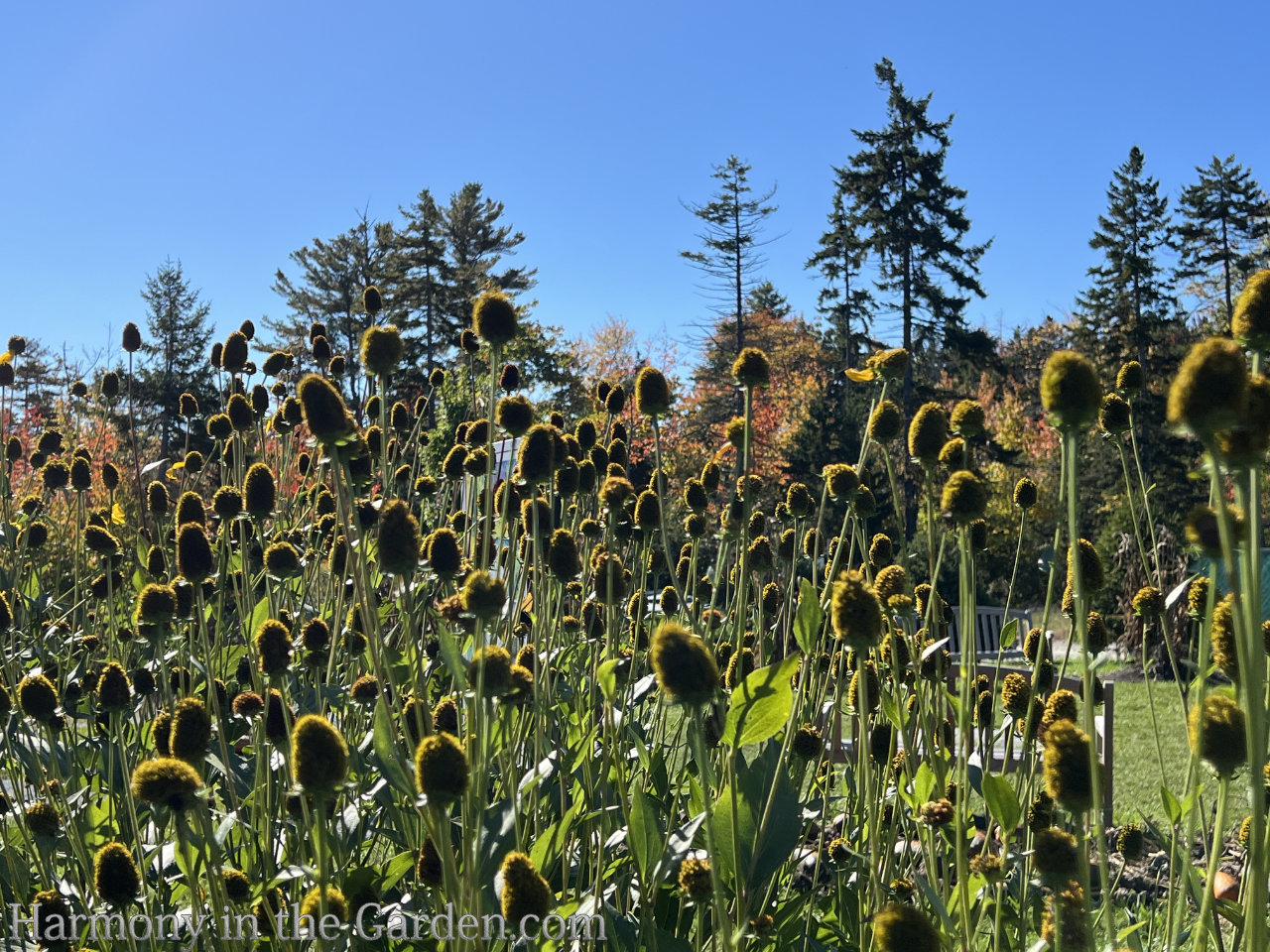
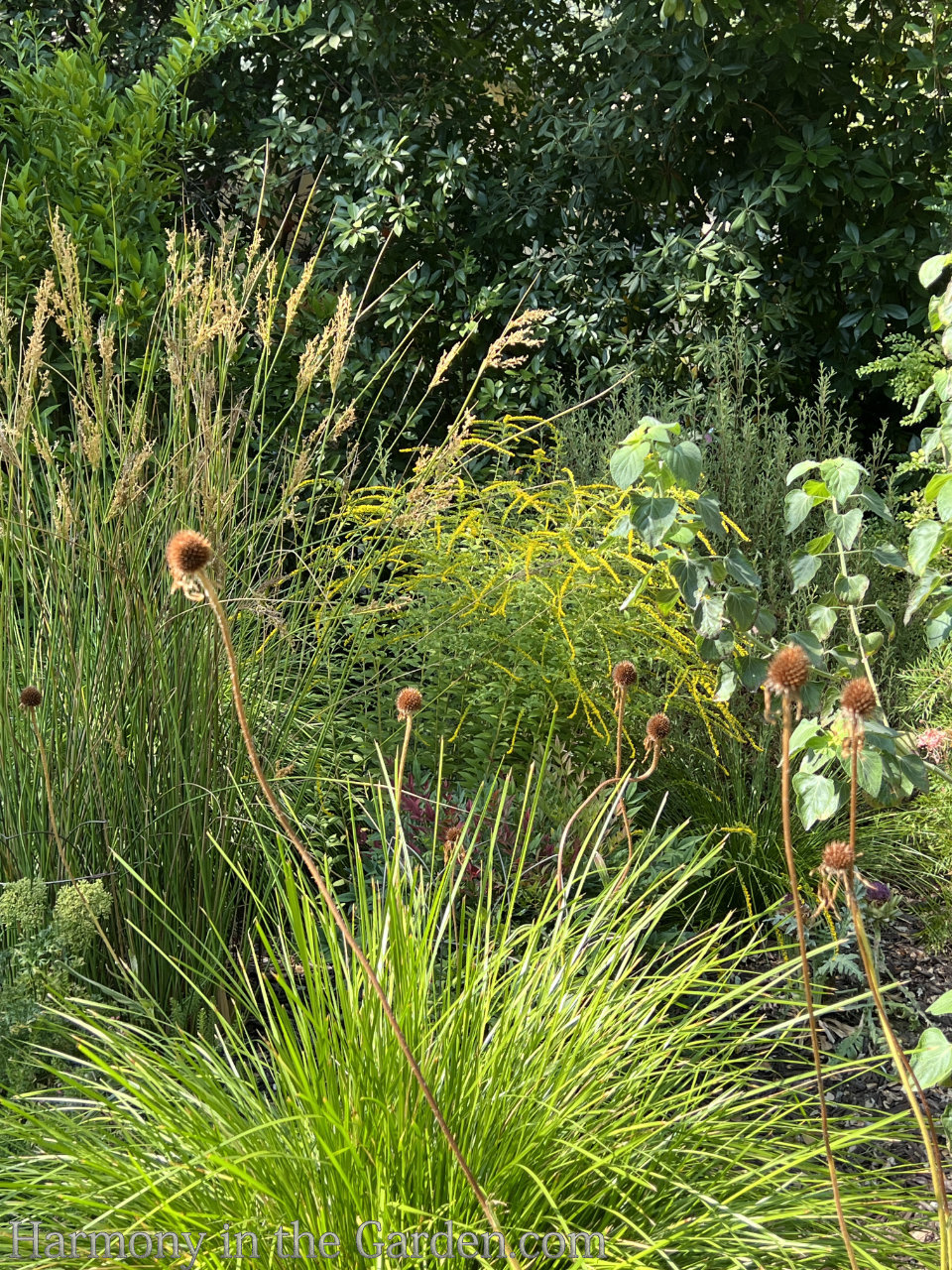
And, in addition to the seed heads, many perennials also have hollow stems which are essential sheltering places for hibernating beneficial insects, such as ladybugs and native bees, offering them a safe place to overwinter.
A few examples include rudbeckias, asters, Joe-Pye weed, elderberry shrubs, and oakleaf hydrangea.
I’ve written a lot about the beauty of leaving dried seed heads in the garden, not just for color but also for structure and textural interest. Click here to read more.

2. Leave the leaves!

Leaving leaves in your garden this fall is an easy way to support nature while reducing your ‘to-do’ list!
Leaves left to slowly break down in a garden bed not only creates a cozy winter blanket for beneficial insects, and provides habitat for many pollinators, the leaves also add valuable nutrients back into the soil as they decompose.
In my garden, I don’t build the leaf layers too thick; otherwise, they’ll make it difficult for our precious rain to percolate down to the soil (not to mention taking forever to decompose. Instead, I limit the layers to 2 to 3 inches.
For more info, Joe Lamp’l has a fantastic podcast episode on leaving the leaves – click here.

3. Treasure a Tree Snag

What’s a tree snag? It’s another name for a dead or dying tree left standing to slowly decompose in place.
And, it’s a valuable asset for the ecosystem in your garden. These natural structures provide essential habitats for so many types of wildlife.
Birds use them for nesting, while insects and fungi find shelter within the bark and wood.
And over time, as the snag decomposes it also enriches the soil, providing nutrients that benefit the surrounding plants.
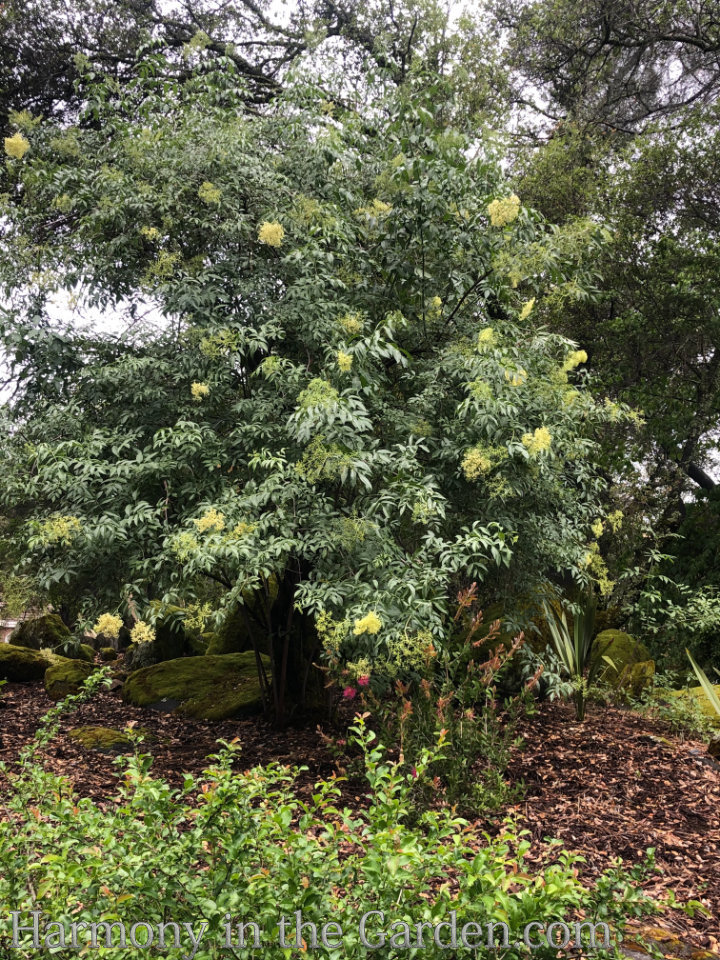
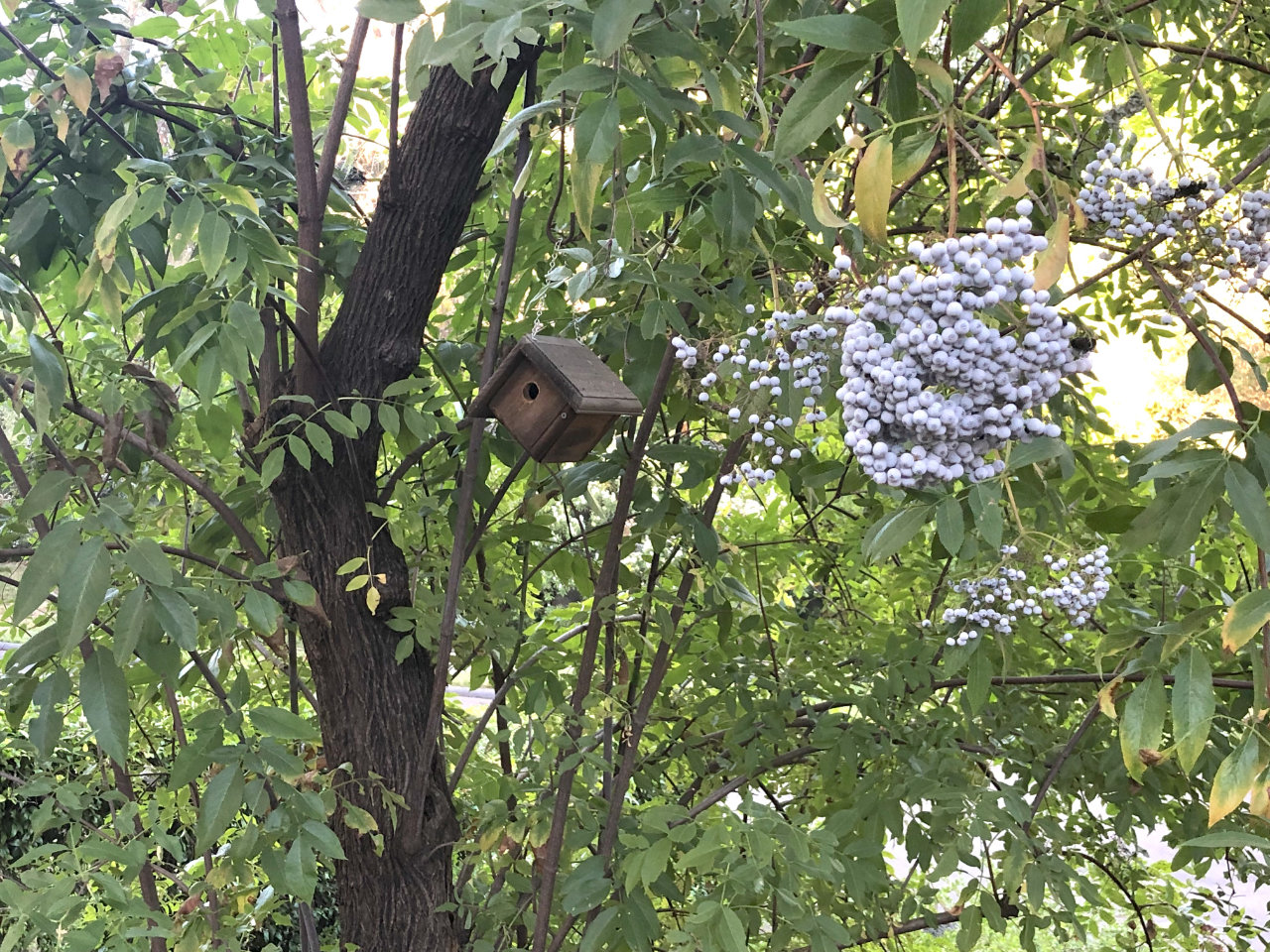
Take a look at this very old elderberry tree in my garden. It’s slowly reaching the end of its life, with much of its trunk hollowed out and less and less fruit production each year.
While some might be tempted to rip it out and replace it with another tree, I’m letting mine slowly die as the amount of birds who use this tree for roosting and nesting is unbelievable!
Just last week I watched a flock of 15 or more ruby-crowned kinglets spend the afternoon eating tiny insects that were on this tree.
Take a look below to see how a sneaky bird was raising her young deep inside a hollowed-out branch.
And click here for my favorite elderflower cordial (it’s SO easy to make!)

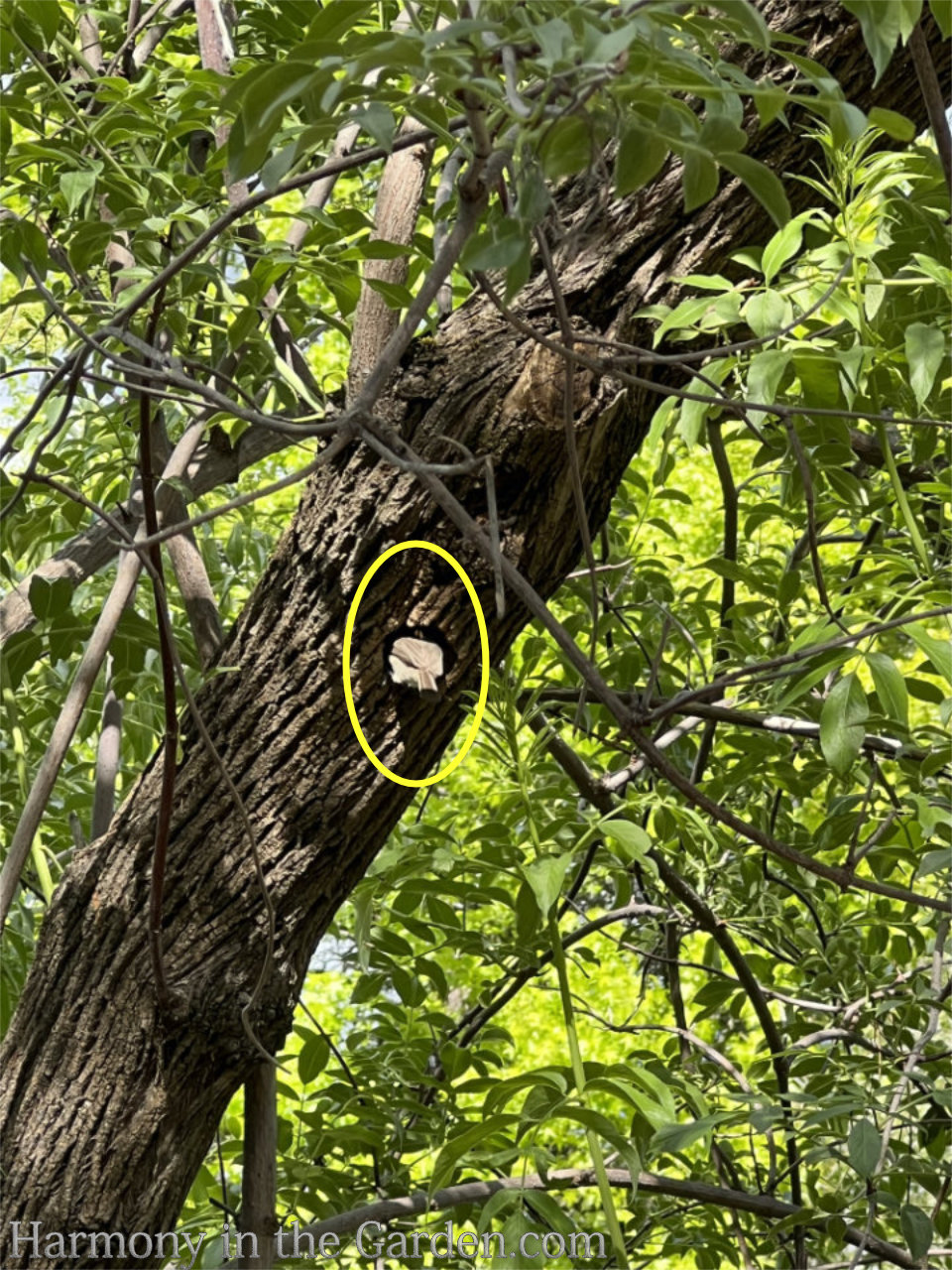

4. Creating Designated Twig and Log Piles
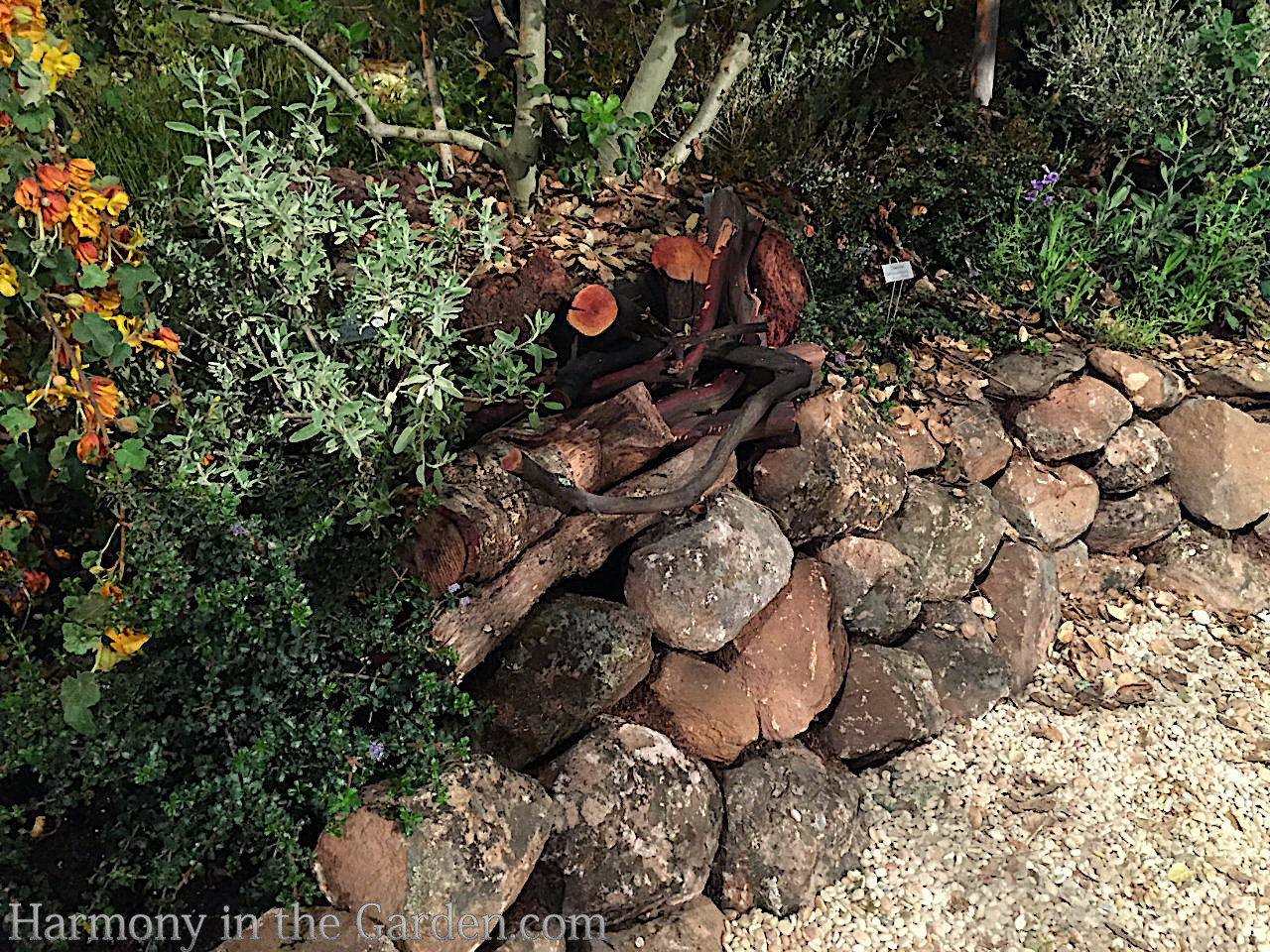
Designating a twig and log pile during fall cleanup is an easy way to provide warm shelter for small mammals, birds, amphibians, and beneficial insects, giving them a safe haven through the cold winter months.
By simply stacking thin branches and logs in a quiet corner of your garden, you’re building a sanctuary for local wildlife, which supports a healthier and more diverse ecosystem.


If you want to take things up a notch, consider creating a low-stacked log wall, as Lani Freymiller did in her garden.
When she and her husband first moved into their garden, they had to remove several overgrown and half-dead trees.
But instead of having an arborist haul them away, they had them cut into manageable lengths and built a simple, eco-friendly, and beautiful low wall that gently winds throughout the garden.

The wall’s rustic simplicity harmoniously blends with the rest of her garden while providing a natural habitat for the wildlife in her garden.
Click here if you’d like to read more about Lani’s garden (and see her Monet-inspired swing!)
5. Set Aside Bare Soil for Burrowing Pollinators

During fall cleanup, consider leaving small areas of bare soil to support burrowing insects, like native bees, which hibernate underground.
By allowing patches of exposed soil, you create safe spaces for these essential pollinators to nest and overwinter.
This practice is easier to implement in larger gardens, where bare patches can be tucked away from view.
In smaller gardens, it may be a bit more challenging, but you can still set aside a few bare areas behind larger shrubs, along the back fence, or in other less visible parts of the garden beds.
When mulching your garden beds, try to leave some spots with a thin layer of mulch, or no mulch at all, to help insects easily access the soil.


And, in celebration of this glorious (but fleeting) season, I’m including some links to fantastic fall gardens I’ve visited and helpful articles.
And because I’m thrilled fall is finally here (it’s been a long, HOT summer!) I thought I’d share a few photos of my recent trip to Maine. Enjoy the season, everyone!
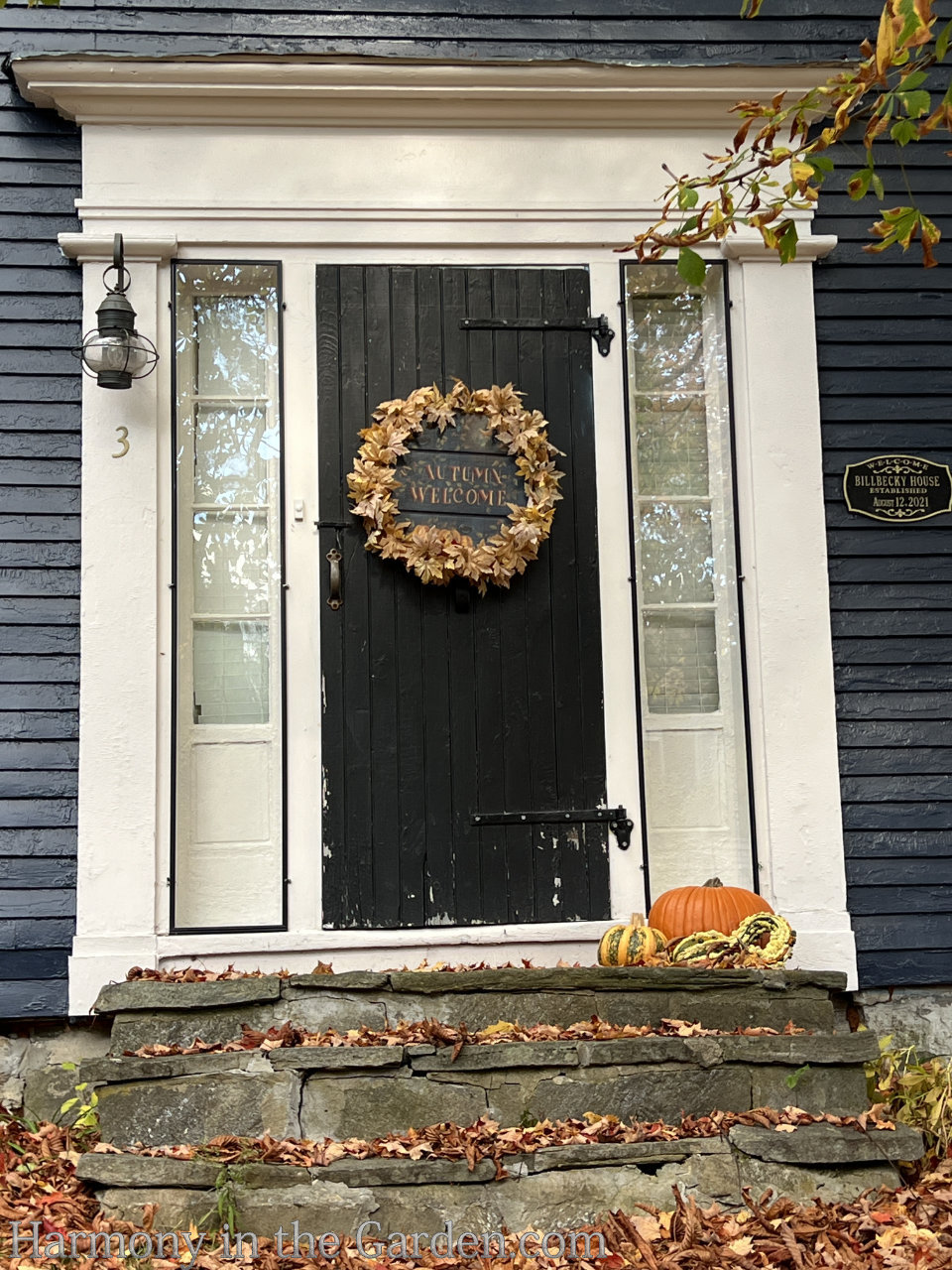
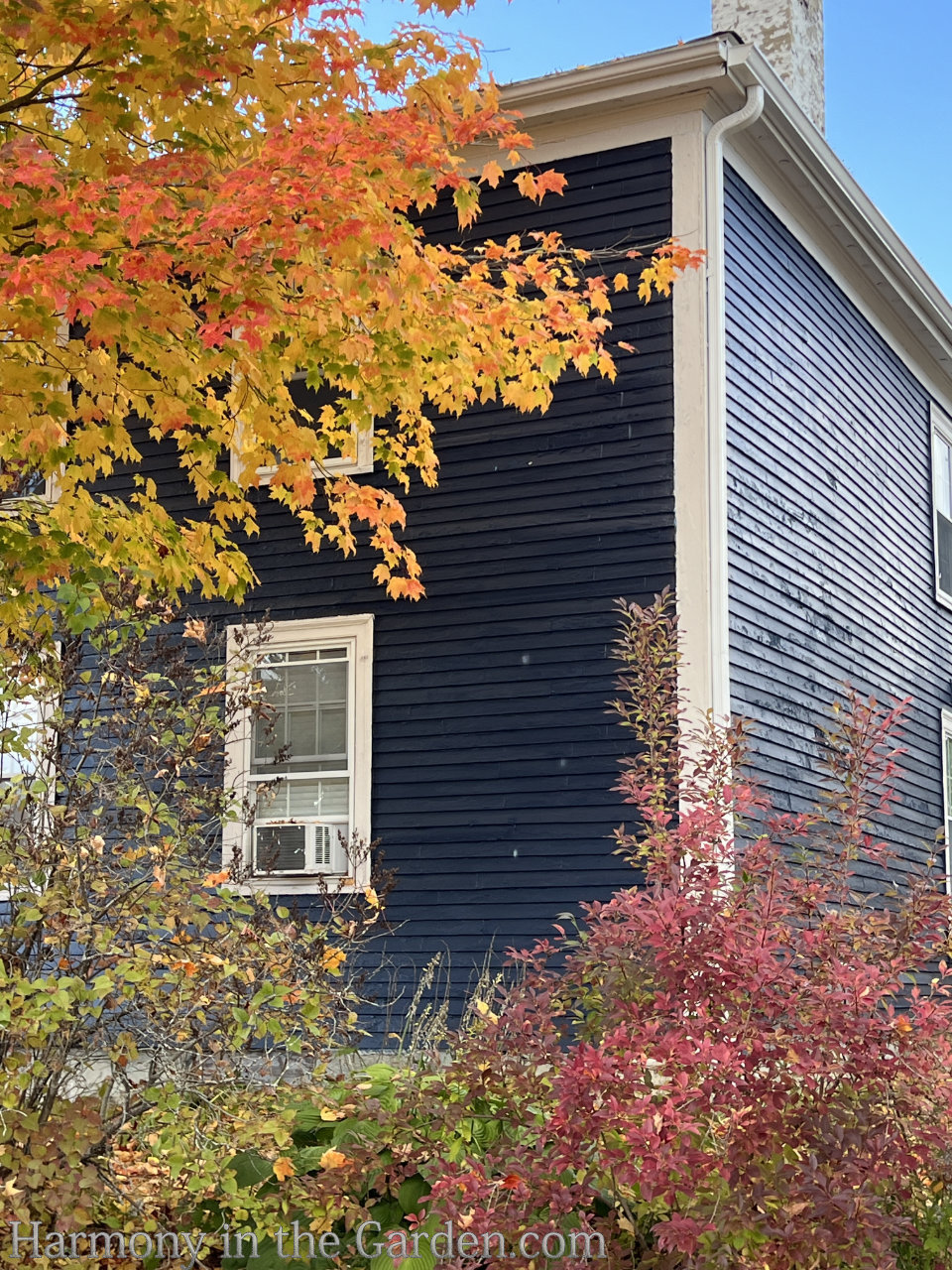

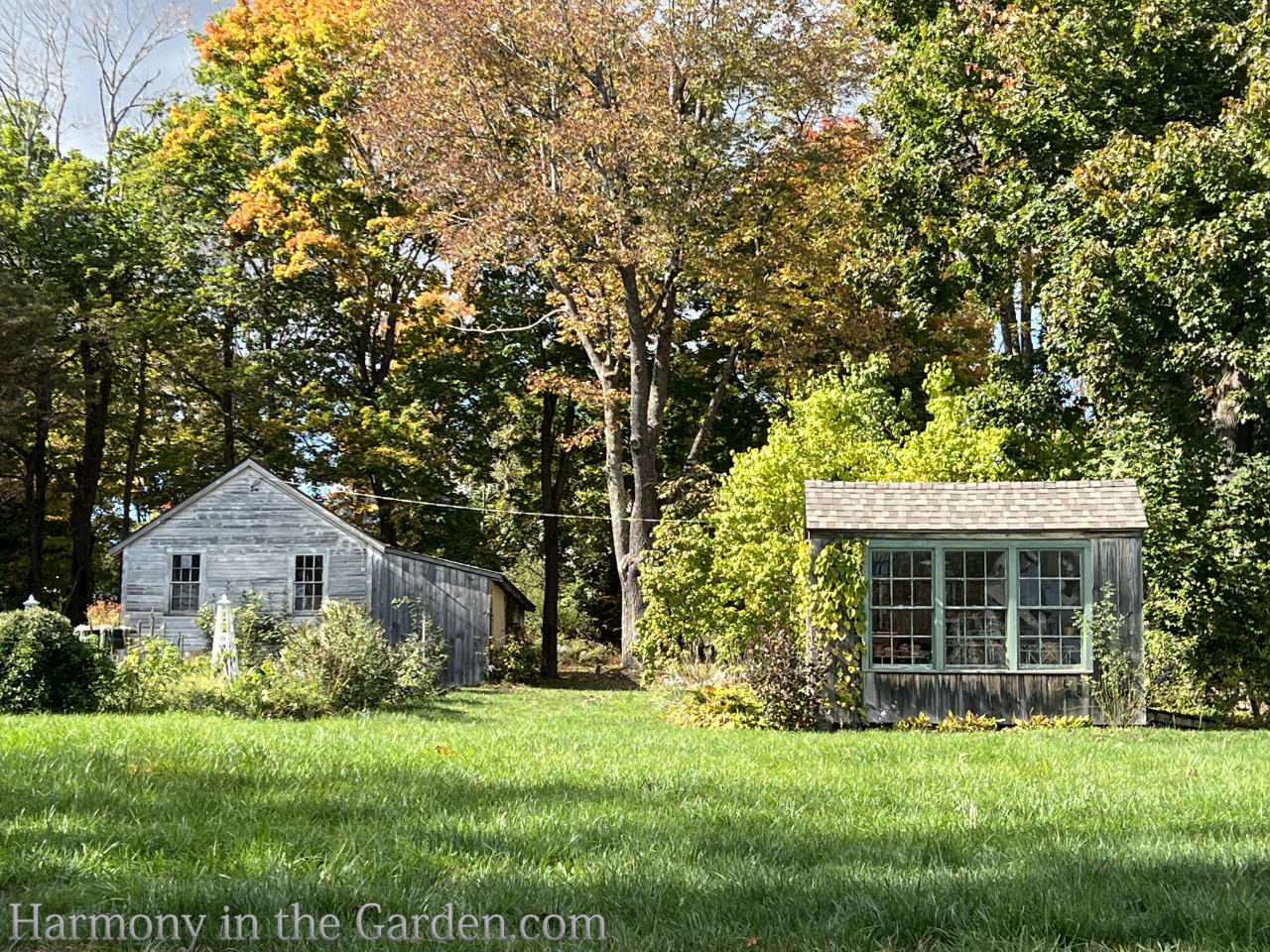
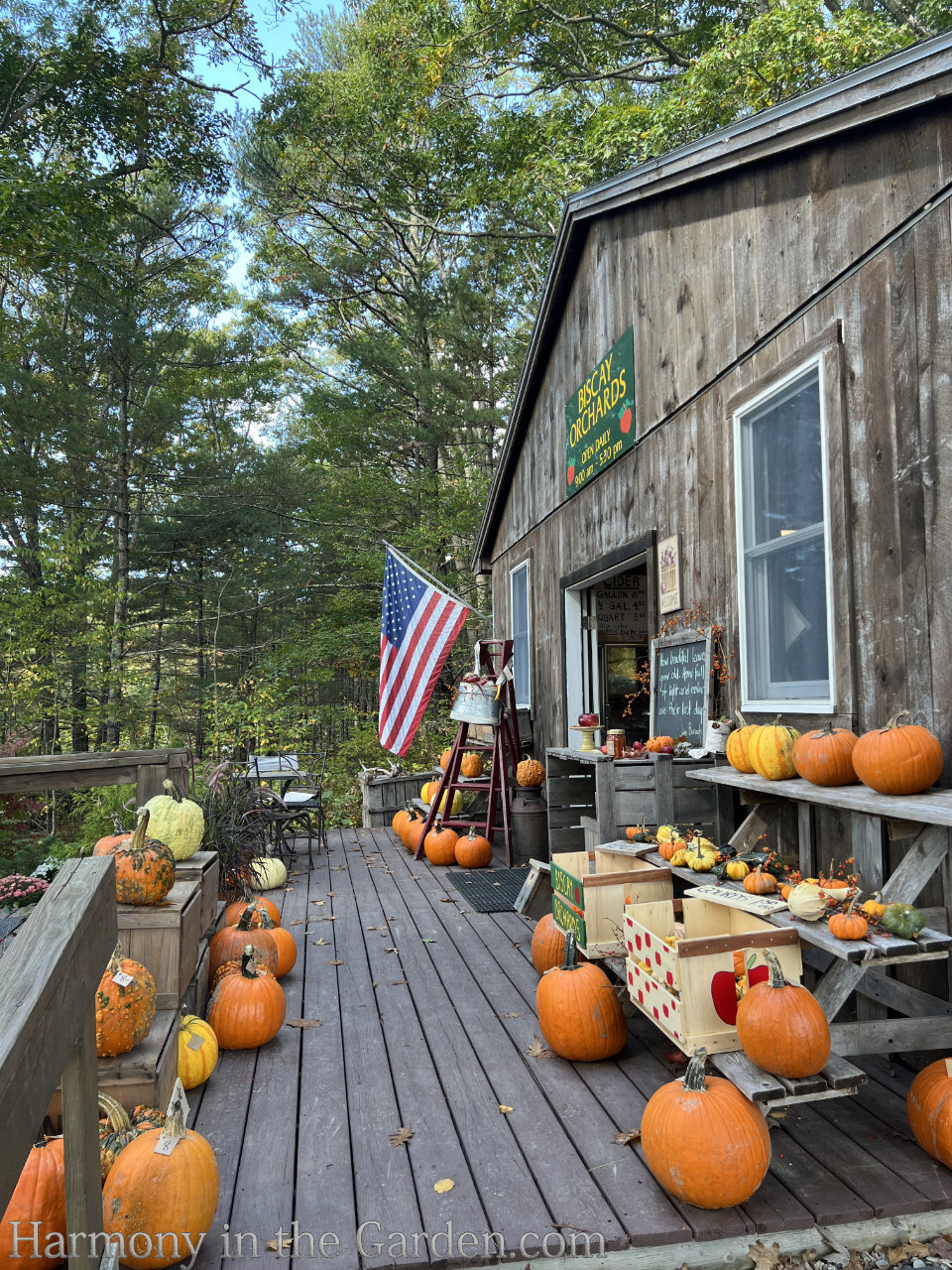

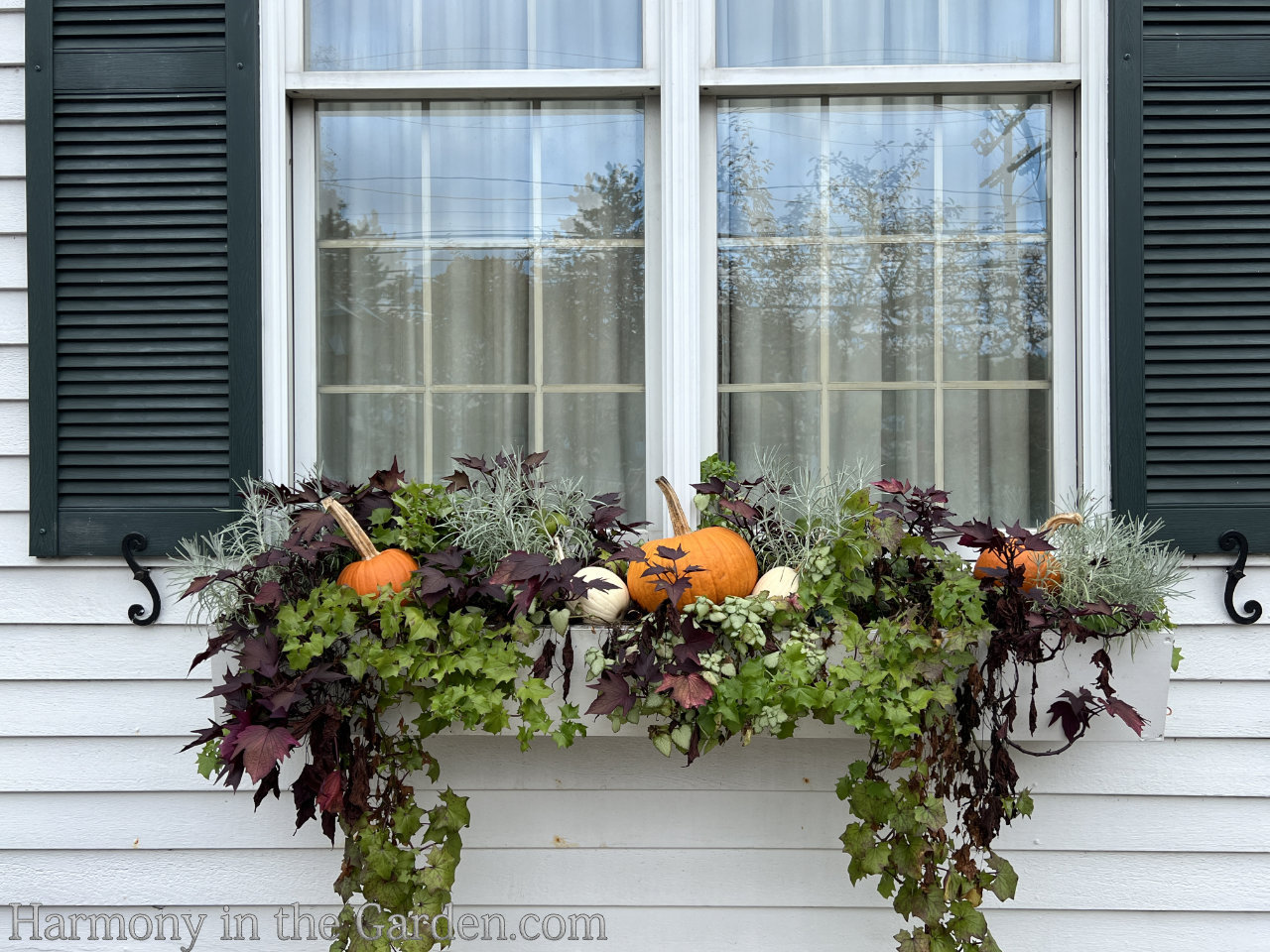





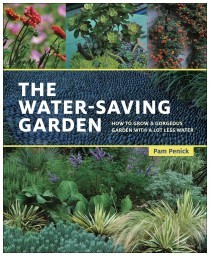
10 Comments
I run a gardening business in the UK in Southern England. I love this time of year. Challenging keeping the gardens looking good but having the balance to consider the wildlife. Such a well written article and I love the seating area in the first photo.
Hi Rob, welcome to my site and I’m so glad you enjoyed my article. Isn’t that first photo amazing? If you want to see the rest of their incredible garden, take a peek here: https://harmonyinthegarden.com/2022/09/freeland-sabrina-tanners-unforgettable-garden/
Hi Rebecca, love your article on fall. Nice to have the change in temperature, light and color. Love the pictures of Maine-love Maine-so beautiful. Hope you enjoyed your trip to maine?
Let me know if you are ever going to be in the neighborhood!
Kathy
Hello Kathy and so nice to hear from you! I am beyond thrilled with the cooler temps, this summer just about did me in! I told Emily that if she and Aaron want to move back East, I’ll be right behind them (with Tom and my mother in tow…) it’s gorgeous back there (as you well know) I hope all is well with you and will definitely let you know when I come down next. I’d love to see you and your garden again!
Thank you for writing this important article Rebecca. Despite all the good information out there, most people still subscribe to the ‘mow and blow’ mentality of yard care Even if their gardens contain a few useful plants for wildlife, the subscription ‘garden janitorial’ services are scraping every bit of organic material away. I hope that this article will reach a few more people and educate them that our gardens are an incredibly important resource for wildlife in our increasingly dense, urbanized world.
Hi Ronnie, I hope it resonates with people, too and am hopeful it will. I have wonderful gardeners who help me every other week and they now know to leave the redwood needles under the trees alone, as well as the leaves under my long photinia and pittosporum hedge. Once, I even lifted up a thick packed-down layer of leaves to show them all the millipedes that were under there and they ‘got it’
Hi Rebecca, We just returned from Maine also! My first time there. So beautiful with all the colorful trees and weathered structures by the coast. Thank you for the inspiration and suggestions.
Miss you!
Gigi
Wow – you’re the second person I know who was in Maine at the same time! It was my first time, also, and still can’t get over how gorgeous it was. Those gorgeous old homes are unbelievable, aren’t they? Nice to hear from you & miss you, too!
Hello Rebecca,
Thank you for the Fall gardening article and beautiful inspiring photos. Really enjoyed the views of Maine.
Glad you enjoyed the Maine pics, Sabrina, and I can’t wait to see your glorious garden in just a few weeks! 🙂